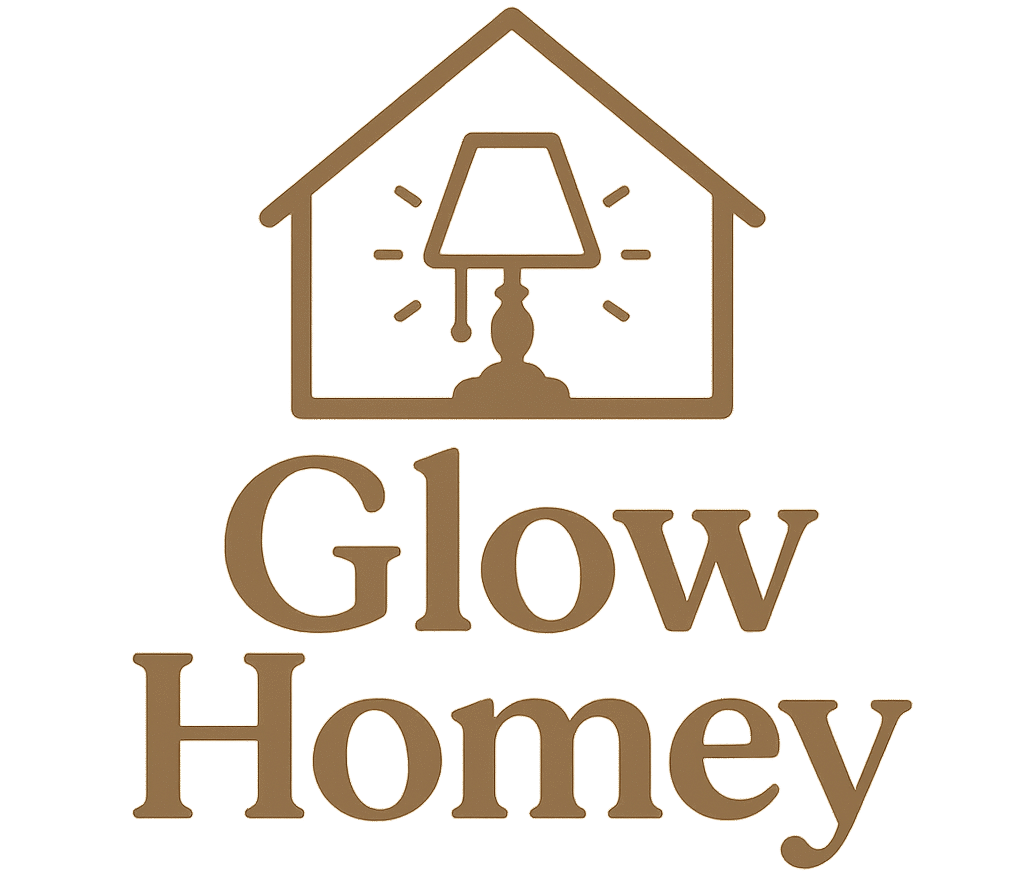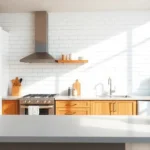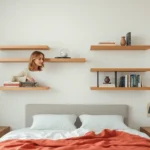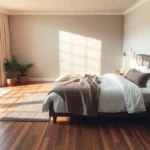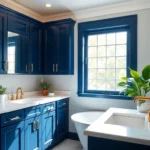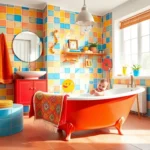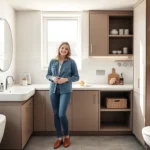Bathroom splashbacks aren’t just practical necessities – they’re powerful design elements that can completely transform your space. Whether you’re renovating your master ensuite or updating a powder room we’ve discovered that the right splashback choice makes all the difference between a bland bathroom and a stunning sanctuary.
From sleek subway tiles to bold natural stone and contemporary glass panels the options for bathroom splashbacks have exploded in recent years. We’re seeing homeowners move beyond basic white tiles to embrace materials that reflect their personal style while protecting walls from water damage and daily wear.
The best part? You don’t need a massive budget or professional contractor to achieve impressive results. We’ll walk you through the most popular splashback materials current design trends and practical installation tips that’ll help you create a bathroom that’s both beautiful and functional. Let’s jump into the ideas that are transforming bathrooms across the country.
Natural Stone Splashback Ideas for Timeless Elegance
Natural stone transforms bathrooms into sophisticated spaces that never go out of style. We’ve seen these materials create stunning focal points while delivering exceptional durability for decades of use.
Marble Splashbacks for Luxury Appeal
Marble splashbacks create an instantly recognizable sense of opulence in any bathroom space. We recommend Carrara marble for its classic white base with subtle gray veining that complements both traditional and contemporary designs. Calacatta marble offers bolder veining patterns that make dramatic statements behind vanities or bathtubs.
Bookmatched marble panels showcase the stone’s natural patterns by mirroring adjacent slabs for symmetrical beauty. We’ve found that honed finishes provide better slip resistance in wet areas while maintaining marble’s elegant appearance. Polished surfaces reflect light beautifully but require more maintenance to prevent water spots and etching from acidic products.
Maintenance becomes manageable when we seal marble surfaces every 6 to 12 months depending on usage. Professional installation ensures proper waterproofing behind the stone to prevent moisture damage to underlying structures.
Travertine Options for Rustic Charm
Travertine brings Mediterranean warmth to bathroom spaces with its naturally pitted surface and earth tone variations. We love how tumbled travertine creates texture that hides water spots while adding visual interest to splashback areas. Filled travertine provides smoother surfaces that work well in modern bathrooms seeking subtle natural character.
Color options range from creamy ivory to rich walnut tones that coordinate with wood vanities and bronze fixtures. We’ve installed travertine in subway tile patterns for classic appeal and in large format tiles for contemporary looks. Natural edge tiles showcase the stone’s organic qualities while straight cuts provide cleaner lines.
Sealing travertine becomes essential due to its porous nature that absorbs moisture and stains readily. We apply penetrating sealers that protect the stone without altering its natural appearance or texture.
Slate Designs for Modern Sophistication
Slate delivers contemporary elegance through its fine grain texture and rich color palette ranging from charcoal gray to deep green. We appreciate how slate’s natural cleft surface adds dimension while maintaining clean lines that suit modern bathroom designs. Honed slate provides uniform surfaces that create seamless transitions between tiles.
Stacked installation patterns emphasize slate’s linear qualities while herringbone layouts add ever-changing movement to larger splashback areas. We’ve used slate penny tiles for unique texture and oversized panels for minimalist statements. Welsh slate offers superior quality with consistent coloring while Indian slate provides budget friendly alternatives.
Water resistance makes slate an excellent choice for high moisture bathroom environments without requiring frequent sealing like other natural stones. We recommend professional installation to ensure proper spacing and leveling that showcases slate’s natural beauty.
Tile Splashback Ideas for Versatile Style

Tile splashbacks offer endless possibilities for creating distinctive bathroom designs that complement any decor style. We’ve explored natural stone options, and now we’ll examine tile varieties that provide exceptional versatility and design flexibility.
Subway Tile Arrangements for Classic Look
Horizontal layouts create the traditional subway tile appearance that works exceptionally well in smaller bathrooms. This classic arrangement maintains clean lines while maximizing the perception of width in compact spaces.
Vertical installations add visual height to your bathroom, making ceilings appear taller than they actually are. We recommend this layout for bathrooms with standard ceiling heights where you want to create an illusion of greater space.
Herringbone patterns transform ordinary subway tiles into eye-catching focal points through their zigzag arrangement. This sophisticated pattern adds texture and movement while maintaining the timeless appeal of subway tile design.
Mosaic Tile Patterns for Visual Interest
Geometric patterns using hexagon and rhombus tiles create both playful and minimalist designs depending on your color choices. These shapes offer contemporary appeal while providing endless customization options for unique bathroom styles.
Nature inspired mosaics featuring aquamarine tiles evoke underwater environments that bring soothing ambiance to your bathroom space. We find these patterns particularly effective in creating spa-like atmospheres that promote relaxation.
Marble mosaic combinations blend luxury materials with intricate pattern arrangements to add sophisticated depth to bathroom walls. These premium options create visual interest through both material texture and geometric design elements.
Large Format Tiles for Seamless Appearance
Oversized cement look tiles provide modern backdrops that perfectly complement contemporary bathroom fixtures and fittings. These large format options create industrial chic aesthetics while maintaining practical functionality.
Large format porcelain tiles minimize grout lines to create seamless appearances that reduce visual clutter in your bathroom design. We prefer these tiles for achieving clean, uninterrupted surfaces that enhance the sense of space and light.
Glass Splashback Ideas for Contemporary Bathrooms

Glass splashbacks represent the pinnacle of modern bathroom design, offering sleek surfaces that seamlessly integrate into contemporary spaces. We’ll explore three distinct glass options that combine functionality with stunning visual appeal.
Back-Painted Glass for Bold Color Statements
Back-painted glass splashbacks transform bathrooms into vibrant showcases through colored enamel applied to the panel’s rear surface. This technique creates solid, bold hues that serve as striking focal points in any bathroom design. Deep blues, emerald greens, and bright reds are popular choices that can dramatically alter a space’s atmosphere.
Durability sets back-painted glass apart from traditional painted surfaces, as the color remains protected behind the glass panel. Cleaning becomes effortless with simple wipe-down maintenance, making these splashbacks ideal for busy households. Customization options allow homeowners to match any decor scheme, ensuring perfect color coordination with existing fixtures and finishes.
Installation flexibility makes back-painted glass suitable for various bathroom configurations, from compact powder rooms to expansive master suites. We recommend consulting with glass specialists to achieve precise color matching and professional installation for optimal results.
Textured Glass Panels for Privacy and Style
Textured glass panels offer the perfect balance between privacy and aesthetic enhancement in bathroom applications. Ribbed, fluted, and patterned glass options create visual interest while diffusing light and obscuring visibility. These panels work exceptionally well in shower enclosures where privacy is essential without sacrificing natural light flow.
Light diffusion through textured surfaces adds depth and dimension to bathroom walls, creating subtle shadows that change throughout the day. Tactile interest from various surface patterns introduces a sophisticated design element that complements both modern and transitional bathroom styles.
Maintenance requirements remain minimal with textured glass, though the surface patterns may require slightly more attention during cleaning compared to smooth glass panels. We suggest using appropriate cleaning tools that can reach into textured grooves for thorough maintenance.
Mirror Splashbacks for Space Enhancement
Mirror splashbacks provide dual functionality by protecting walls from water damage while visually expanding bathroom dimensions. These reflective surfaces bounce light throughout the space, making even compact bathrooms appear brighter and more spacious. Mirror splashbacks work particularly well in powder rooms and guest bathrooms where space optimization is crucial.
Customization options include various thicknesses, colored finishes, and smoked treatments that complement modern interior design schemes. Reflected light creates an illusion of depth that transforms cramped spaces into airy, open environments.
Installation considerations include proper moisture barriers and professional mounting to ensure long-term performance. We recommend selecting high-quality mirror backing that resists moisture damage and maintains clarity over time. Strategic placement near windows or lighting fixtures maximizes the space-improving benefits of mirror splashbacks.
Metal Splashback Ideas for Industrial Appeal

Metal splashbacks bring an unmistakable industrial edge to modern bathrooms while delivering exceptional durability. We’ve selected the most popular metal options that combine style with functionality.
Stainless Steel Options for Easy Maintenance
Stainless steel splashbacks dominate the industrial bathroom market due to their remarkable resistance to heat and moisture. We recommend this material for homeowners seeking a low-maintenance solution that won’t corrode over time. Professional installation ensures seamless integration with existing fixtures like faucets and towel bars.
Pairing stainless steel with contrasting materials creates visual depth in your bathroom design. We’ve seen stunning combinations with natural wood vanities or concrete countertops that enhance the overall industrial aesthetic. Modern bathrooms benefit from the sleek appearance that stainless steel provides.
Copper Designs for Warm Accents
Copper splashbacks offer a luxurious feel with warm aesthetic appeal that transforms any bathroom space. We can customize these installations with various patterns and designs to match your exact style preferences. Heritage looks become achievable through modern aging technology that creates authentic patina effects.
Aged copper provides unique industrial appeal suitable for both contemporary and traditional bathroom designs. We’ve installed copper splashbacks that develop beautiful color variations over time, adding character to the space. Luxury touches emerge naturally as copper develops its distinctive weathered appearance.
Brushed Aluminum for Sleek Finishes
Brushed aluminum delivers modern appeal through its lightweight construction and sophisticated appearance. We choose this material when clients want sleek finishes that complement other industrial elements like exposed piping or concrete walls. Installation becomes straightforward due to aluminum’s manageable weight compared to other metal options.
Sleek looks emerge from brushed aluminum’s refined surface texture that reflects light beautifully throughout the bathroom. We’ve found this material works exceptionally well in smaller spaces where visual lightness helps create an open feeling. Contemporary bathrooms showcase brushed aluminum’s versatility in various design schemes.
Painted Splashback Ideas for Budget-Friendly Solutions

Painted splashbacks offer an affordable alternative to expensive materials while delivering impressive visual impact. We can transform any bathroom with creative paint techniques that cost a fraction of traditional splashback options.
Waterproof Paint Techniques for DIY Projects
Epoxy paint creates the most durable water-resistant finish available for high-moisture bathroom areas. This specialized coating forms a hard, glossy surface that withstands daily splashing and humidity while maintaining its appearance for years. We recommend applying epoxy in thin, even coats using a high-quality roller for professional results.
Acrylic paint with clear sealant provides excellent water resistance when properly applied in layers. First, we apply premium acrylic paint in our desired color, then seal it with a clear polyurethane topcoat for enhanced moisture protection. This combination offers flexibility in color choice while ensuring long-lasting durability.
Specialized bathroom paint eliminates guesswork by using formulations specifically designed for high-humidity environments. These paints contain antimicrobial properties that resist mold and mildew growth while providing superior moisture resistance. We find these products particularly effective in shower areas where steam exposure is constant.
Decorative Stenciling for Personalized Designs
Geometric patterns transform plain walls into striking focal points using simple stencil techniques. We can create diamond shapes, hexagonal patterns, or modern triangular designs that complement contemporary bathroom themes. These patterns work especially well when using contrasting colors against neutral backgrounds.
Nature-inspired designs bring organic beauty to bathroom spaces through leaf motifs, floral patterns, or wave-like formations. Stenciled ferns, bamboo stalks, or ocean waves create spa-like atmospheres that promote relaxation. We suggest using subtle color variations to achieve depth and visual interest.
Custom messages add personality through stenciled quotes, family names, or inspirational words positioned strategically around the vanity area. Popular phrases like “Relax,” “Refresh,” or “Unwind” reinforce the bathroom’s purpose while creating unique design elements. We recommend using elegant fonts that complement the overall design scheme.
Color Coordination Tips for Cohesive Themes
Fixture matching ensures painted splashbacks harmonize with existing bathroom hardware and accessories. We analyze the undertones in faucets, towel bars, and light fixtures to select paint colors that create seamless integration. Chrome fixtures pair beautifully with cool grays and blues, while brass hardware complements warm beiges and soft golds.
Neutral backgrounds provide versatile foundations for colorful accent pieces and changing seasonal decorations. We often choose soft whites, light grays, or warm beiges as splashback colors, then introduce personality through towels, artwork, and plants. This approach allows easy updates without repainting entire surfaces.
Theme-based coordination aligns splashback colors with exact design concepts like coastal, modern, or traditional styles. Spa-themed bathrooms benefit from soft greens and blues that evoke natural tranquility, while modern spaces shine with bold blacks, whites, or dramatic accent walls. We match these colors to existing tile work and flooring for complete design harmony.
Vinyl and Laminate Splashback Ideas for Quick Updates
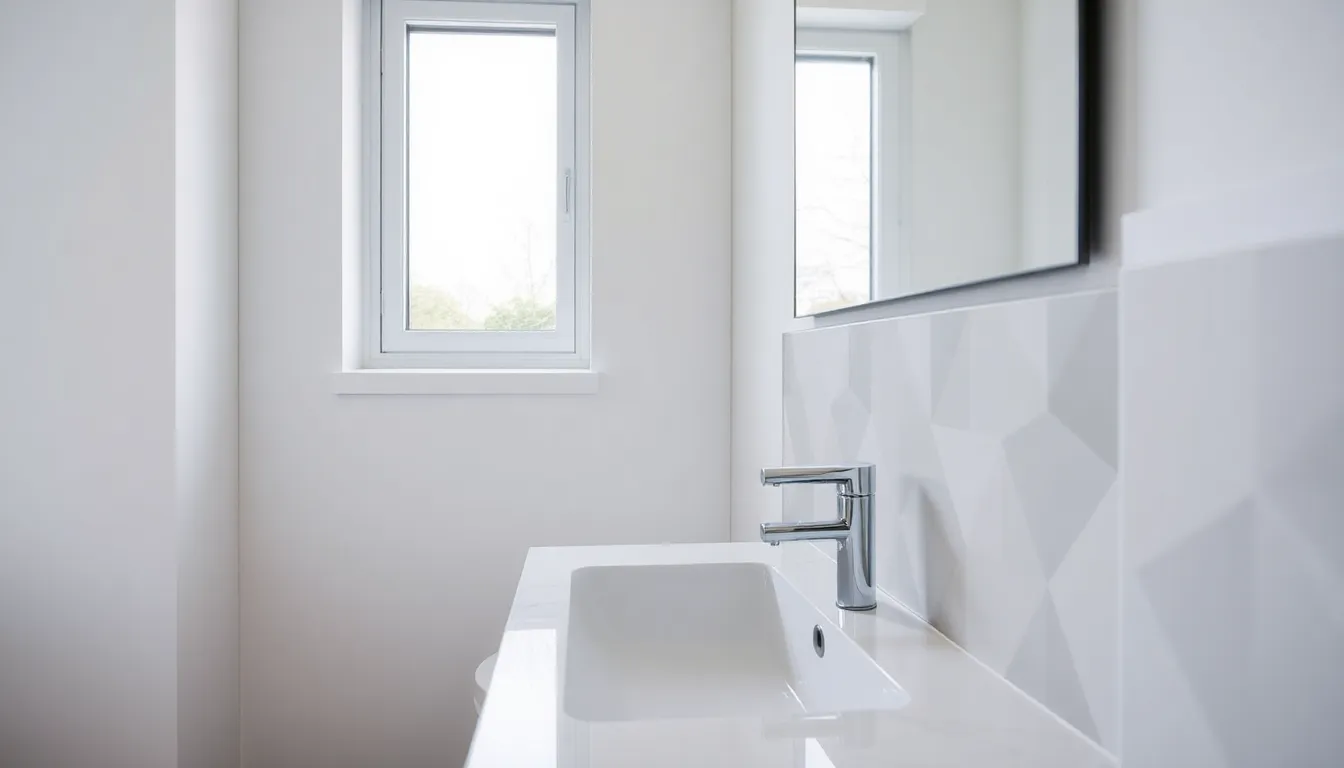
Temporary splashback answers offer remarkable flexibility for homeowners who need quick bathroom updates without permanent installation commitments. These versatile materials provide the appearance of expensive finishes while maintaining removability and affordability.
Peel-and-Stick Options for Rental Properties
Removable adhesive splashbacks transform rental bathrooms without violating lease agreements or losing security deposits. We recommend these answers for tenants who want personalized style without permanent modifications to the property.
Application becomes effortless with self-adhesive backing that bonds securely to clean, smooth surfaces. Most peel and stick options remove cleanly when heated gently with a hair dryer, leaving no residue behind.
Design variety spans from subway tile patterns to marble finishes and geometric prints. Popular options include faux ceramic tiles, wood grain textures, and metallic accents that complement existing fixtures.
Maintenance requires only regular cleaning with mild soap and water. These materials resist moisture and steam typical in bathroom environments while maintaining their adhesive properties for years.
Laminate Panels for Cost-Effective Installation
Large format laminate panels cover extensive wall areas quickly, reducing installation time compared to individual tiles. We find these panels particularly effective for covering outdated tile or damaged wall surfaces.
Installation methods include adhesive mounting or mechanical fastening systems that accommodate different wall types. Most panels feature interlocking edges that create seamless joints without visible gaps.
Material options replicate premium surfaces like natural stone, wood planks, and designer ceramics at significantly lower costs. High-definition printing technology creates realistic textures that closely mimic authentic materials.
Durability testing shows quality laminate panels withstand bathroom humidity and temperature fluctuations for 10-15 years with proper installation. These surfaces resist scratching, staining, and fading when exposed to typical bathroom conditions.
Vinyl Tile Designs for Easy Replacement
Individual vinyl tiles allow targeted replacement when damage occurs, eliminating the need to replace entire sections. We appreciate this modularity for high-traffic bathrooms where wear patterns develop unevenly.
Luxury vinyl tiles feature rigid cores that resist warping and provide dimensional stability in humid environments. These premium options include textured surfaces that enhance grip and visual authenticity.
Pattern possibilities include traditional layouts like brick bond, herringbone, and basketweave arrangements. Mixing complementary colors creates custom designs that reflect personal style preferences.
Water resistance in vinyl tiles exceeds many traditional materials, making them suitable for direct shower splash zones. Quality vinyl tiles feature sealed edges and waterproof cores that prevent moisture penetration and subfloor damage.
Creative Pattern Splashback Ideas for Unique Designs
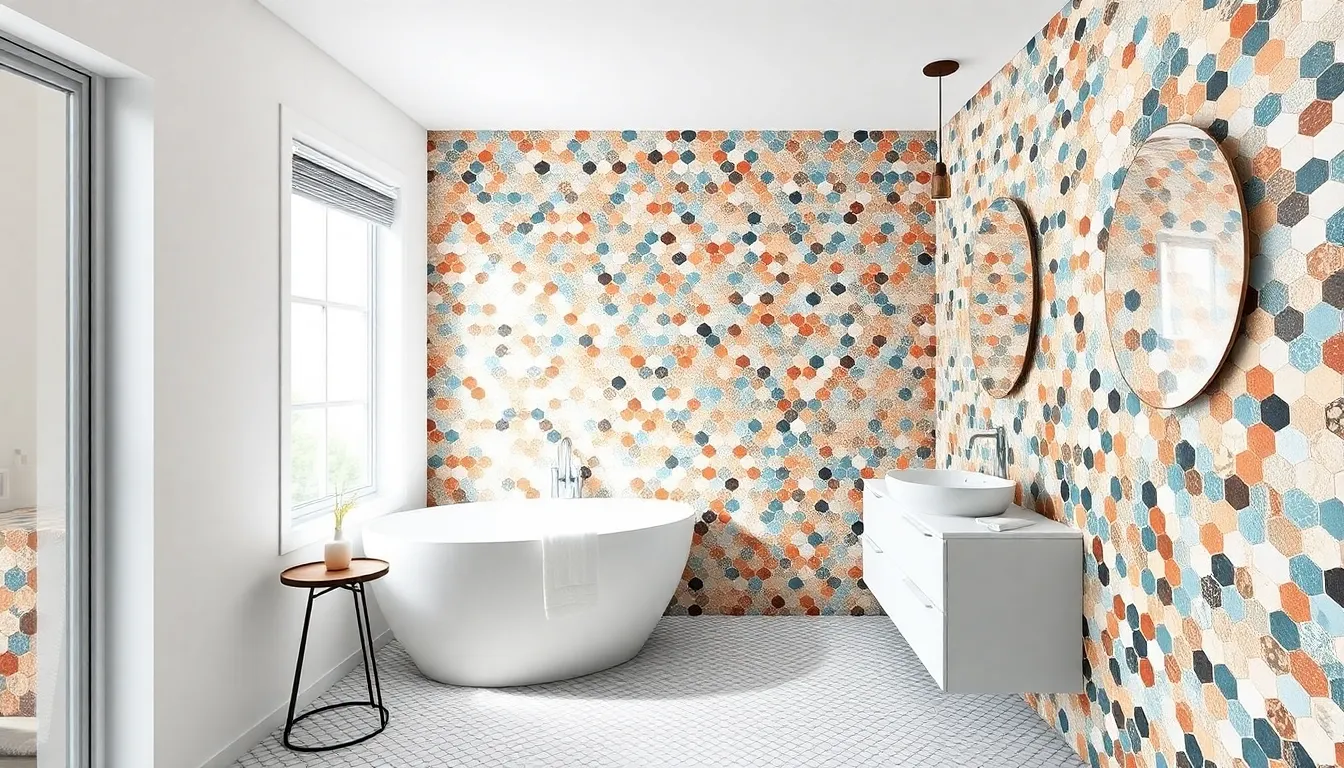
Pattern selection transforms ordinary splashbacks into stunning design statements that reflect personal style preferences. We’ve discovered that unique arrangements can completely redefine bathroom aesthetics while maintaining practical functionality.
Geometric Arrangements for Modern Aesthetics
Penny mosaics create striking Art Deco elements that add remarkable depth to smaller bathroom spaces. These tiny tiles offer incredible versatility since you can customize them to match any color scheme or design theme you envision. Mixed material combinations using glass, stone, and metal produce visually appealing splashbacks that catch the eye from every angle.
Metallic tiles introduce glamorous touches while reflecting natural light to brighten your entire bathroom space. Diamond patterns using contrasting tile colors establish bold focal points that draw attention to exact wall areas. Square grid arrangements with varying tile sizes create sophisticated geometric displays that complement contemporary fixtures beautifully.
Herringbone Layouts for Ever-changing Movement
Herringbone patterns generate incredible movement and energy throughout your bathroom environment, making spaces feel more alive and captivating. Small herringbone mosaics produce fun zigzag effects that add personality to otherwise plain wall surfaces. Different tile materials enhance the visual appeal of herringbone arrangements, from ceramic subway tiles to natural stone options.
Vertical herringbone installations create height illusions that make ceilings appear taller than their actual measurements. Horizontal herringbone layouts stretch wall dimensions wider, perfect for narrow bathroom configurations that need visual expansion tricks.
Hexagonal Patterns for Contemporary Flair
Hexagonal tiles deliver contemporary aesthetics while maintaining vintage charm that appeals to diverse design preferences. These versatile shapes complement any bathroom style, from ultramodern minimalist approaches to classic traditional themes. Available materials include marble, glass, and ceramic options that suit different budget ranges and maintenance requirements.
Large hexagon tiles create seamless appearances with fewer grout lines, perfect for achieving clean modern looks. Smaller hexagonal mosaics allow intricate pattern combinations that showcase your creative vision through detailed arrangements and color variations.
Maintenance and Installation Tips for Bathroom Splashbacks
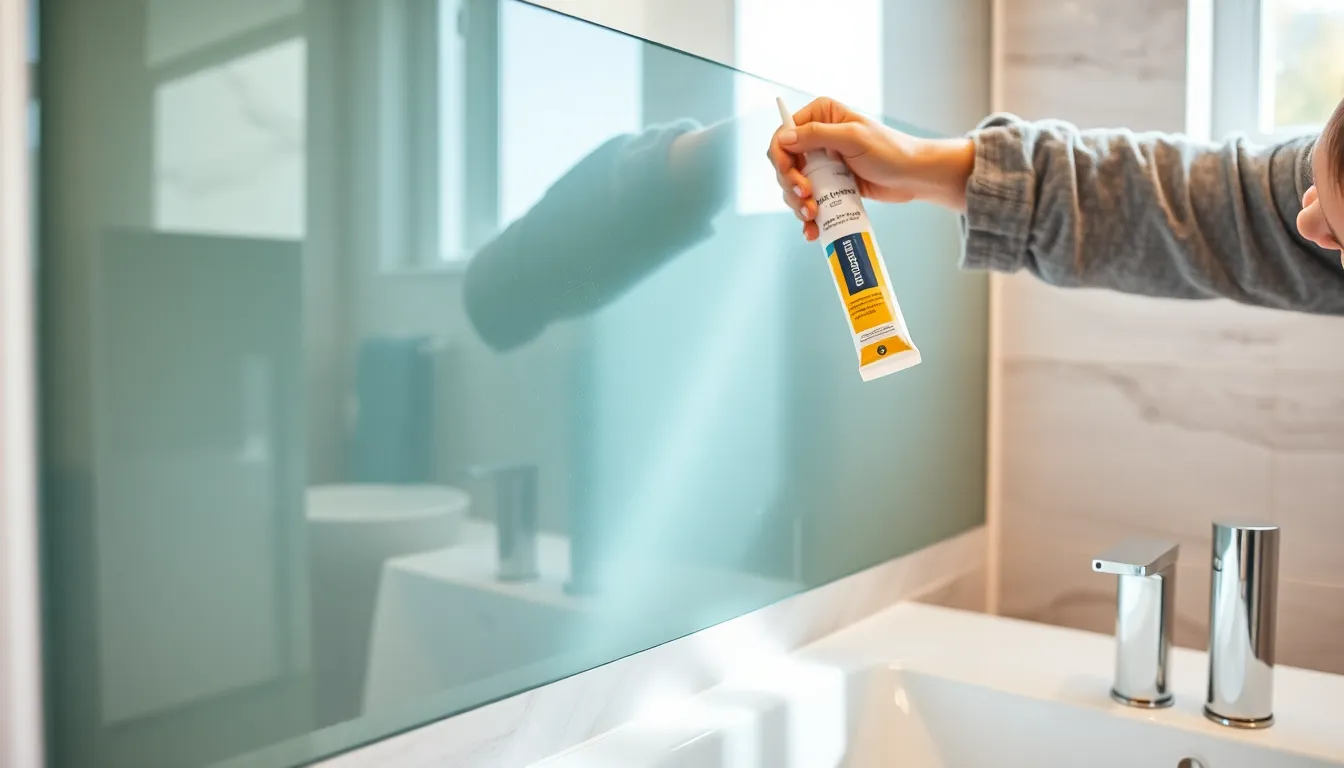
Installing your chosen splashback correctly ensures it’ll protect your walls for years to come. We’ll guide you through the essential maintenance and installation practices that keep bathroom splashbacks looking pristine and functioning effectively.
Proper Sealing Techniques for Longevity
Waterproof sealant application around all splashback edges prevents water from seeping behind your installation. We recommend using high-quality silicone sealant that maintains flexibility as your bathroom experiences temperature changes. Apply the sealant in a continuous bead, smoothing it with your finger for complete coverage.
Regular sealant inspections should occur every six months to catch potential problems early. Check for cracks, gaps, or discoloration that indicate deterioration. Reapply waterproof sealant immediately when you notice these warning signs to maintain your splashback’s integrity and prevent costly water damage to underlying wall structures.
Corner joints require extra attention since they experience the most stress from building movement. Double seal these areas by applying an initial bead, allowing it to cure, then adding a second layer for maximum protection. This technique extends your splashback’s lifespan significantly compared to single layer applications.
Cleaning Requirements for Different Materials
Glass splashbacks need mild, non-abrasive cleaners to maintain their crystal clear appearance. We suggest avoiding ammonia-based products that can damage the surface over time. Dry the glass thoroughly after cleaning to prevent water spots that diminish its reflective properties.
Porcelain surfaces respond best to pH-neutral cleaners paired with soft microfiber cloths for daily maintenance. Apply a baking soda paste or diluted vinegar solution for stubborn stains, letting it sit for 10 minutes before gentle scrubbing. This approach preserves the porcelain’s finish while removing buildup effectively.
Tile splashbacks require gentle tile-exact cleaners that won’t damage grout lines. Use soft-bristled brushes to clean grout without causing erosion. Avoid abrasive materials like steel wool or harsh scouring pads that can scratch tile surfaces and create areas where dirt accumulates.
Natural stone materials need specialized stone cleaners that won’t etch marble or other calcium-based stones. Clean spills immediately to prevent staining, especially with acidic substances like citrus or vinegar. Seal stone surfaces annually to maintain their water resistance and prevent permanent damage.
Professional vs DIY Installation Considerations
Professional installation offers precise measurements and secure mounting that reduces water leak risks significantly. Experienced installers understand substrate preparation, adhesive selection, and proper fastening techniques that ensure long-lasting results. They also provide warranties that protect your investment against installation defects.
DIY installation can save money but requires careful attention to adhesive application and edge sealing procedures. We recommend this approach only if you have experience with similar home improvement projects. Measure twice, cut once, and allow adequate curing time for all adhesives and sealants.
Cost comparison between professional and DIY installation varies based on splashback complexity and your skill level. Simple flat panel installations may suit confident DIYers, while intricate tile patterns or heavy stone materials benefit from professional expertise. Consider the long-term costs of potential repairs when making your decision, as improper installation often leads to expensive water damage remediation.
Conclusion
We’ve explored an extensive range of bathroom splashback options that can transform your space from purely functional to truly spectacular. Whether you’re drawn to the timeless elegance of natural stone the versatility of tiles or the modern appeal of glass and metal there’s a perfect solution for every style and budget.
The key to success lies in choosing materials that align with your maintenance preferences and installation capabilities. From budget-friendly painted options and vinyl answers to premium natural stone and metal finishes each material offers unique benefits that can enhance your bathroom’s aesthetic appeal.
Remember that proper installation and regular maintenance will ensure your chosen splashback continues to protect your walls while maintaining its visual impact for years to come. With these ideas and insights you’re well-equipped to create a bathroom splashback that perfectly reflects your personal style.
Frequently Asked Questions
What are bathroom splashbacks and why are they important?
Bathroom splashbacks are protective wall coverings installed behind sinks, vanities, and showers to prevent water damage while serving as decorative design elements. They protect walls from moisture, soap splashes, and daily wear while significantly enhancing your bathroom’s aesthetic appeal. Modern splashbacks have evolved beyond traditional white tiles to include various materials like natural stone, glass, metal, and creative paint techniques.
What are the most popular materials for bathroom splashbacks?
The most popular materials include natural stone (marble, travertine, slate), various tiles (subway, mosaic, large format), glass panels (back-painted, textured, mirror), and metal options (stainless steel, copper, brushed aluminum). Each material offers unique benefits: stone provides timeless elegance, tiles offer versatility, glass creates modern appeal, and metal adds industrial sophistication to bathroom designs.
Are glass splashbacks suitable for bathrooms?
Yes, glass splashbacks are excellent for bathrooms as they represent modern design excellence. Back-painted glass offers bold colors and easy maintenance, textured glass provides privacy while enhancing aesthetics, and mirror splashbacks expand visual space. Glass is non-porous, water-resistant, and hygienic, making it ideal for wet environments. They’re particularly perfect for compact bathrooms needing visual expansion.
How do I maintain different splashback materials?
Maintenance varies by material: glass requires simple cleaning with standard glass cleaners, porcelain and ceramic tiles need mild soap and occasional grout cleaning, while natural stone requires specialized cleaners and regular sealing. Metal splashbacks need gentle cleaning to avoid scratches. Painted splashbacks with waterproof finishes require only mild soap and water for regular maintenance.
Can I install bathroom splashbacks myself?
DIY installation is possible for experienced homeowners, particularly with peel-and-stick vinyl options, painted splashbacks, and simple tile arrangements. However, professional installation is recommended for complex materials like natural stone, large glass panels, or intricate patterns. Proper sealing and waterproofing are crucial regardless of installation method. Consider your skill level and the complexity of your chosen material.
What are the most budget-friendly splashback options?
Painted splashbacks using waterproof paint are the most budget-friendly option, costing a fraction of traditional materials. Vinyl and laminate options, including peel-and-stick tiles, offer affordable alternatives perfect for rental properties or temporary updates. These materials provide excellent water resistance, easy maintenance, and countless design possibilities while allowing for future changes without significant investment.
How do I choose the right splashback pattern?
Consider your bathroom size and style when selecting patterns. Horizontal subway tiles make spaces appear wider, while vertical arrangements add height. Herringbone patterns create dynamic focal points, geometric designs add modern sophistication, and large format tiles provide seamless, contemporary looks. Choose patterns that complement your existing fixtures and align with your overall design theme for cohesive aesthetics.
Do splashbacks work in small bathrooms?
Absolutely! Splashbacks are particularly beneficial in small bathrooms. Mirror splashbacks visually expand space, while light-colored materials reflect light to create openness. Large format tiles minimize grout lines for seamless appearance, and glass panels maintain visual flow. Vertical tile patterns can make ceilings appear higher, while strategic color choices enhance the perception of space in compact bathrooms.
